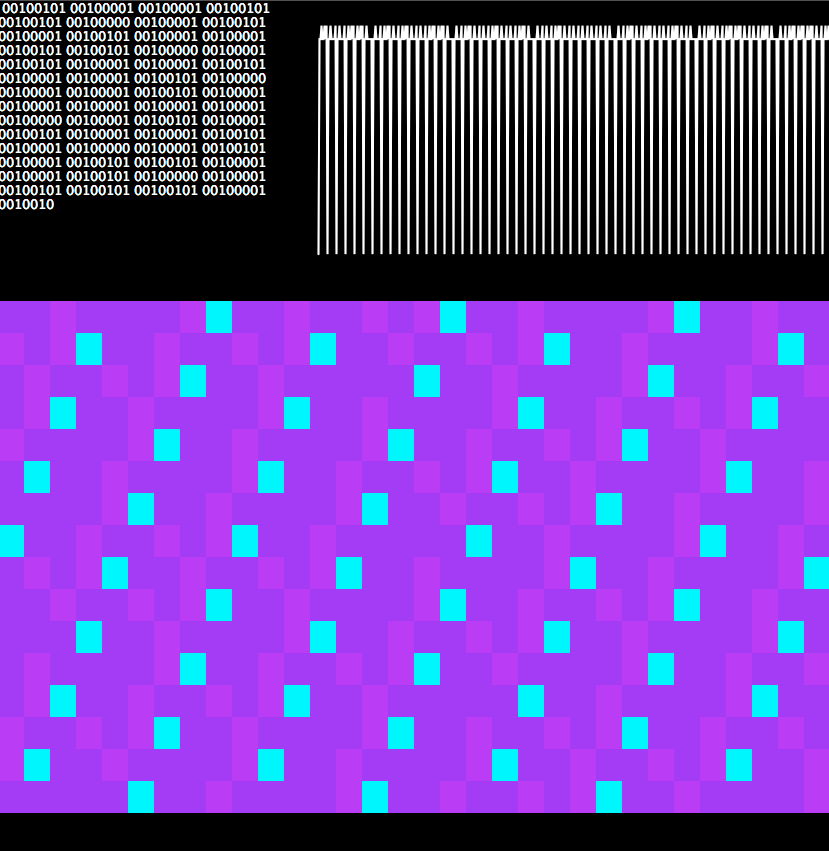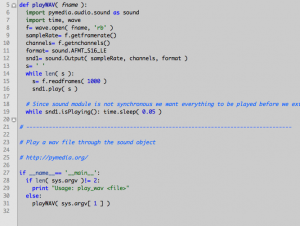RWEL poems turned sound
(see project site here)
The quality of digital representation is somewhat arbitrary, and always bits.
With three short texts: Yeats’ The Second Coming and Squirrel at Kyle-No-No, and the quote at the beginning of Nabokov’s Pale Fire, I made a new form of poetry: that in the form of sound. I generated binary data using Python, then attempted to use Python’s sound libraries in order to write my own sound files. However, instead, I ended up reading the text files representing the original ASCII in binary, I generated sound files in Processing. I experimented by using different sample rates to read in the data and play the sound, in order to start understanding how sample rate from digital data leads to affects the audio outputs. I used both a sin wave and a Audio Out pulse to show two different sound outputs possible. I also used the data to represent color gradients…
Listen to the text:
sample rate: 1, 256, 1024
2 sin waves
Look at the text:
Sample rate at 1024, 512, 256, and 1:




Here is my code in Python:

Here is a snippet example

Using sine waves and black / white, rgb
This reminds me of the ludicrous account he gave Mr. Langston, of the despicable state of a young gentleman of good family. “Sir, when I heard of him last, he was running about town shooting cats.” And then in a sort of kindly reverie, he bethought himself of his own favorite cat, and said, “But Hodge shan’t be shot: no, no, Hodge shall not be shot.
1bit
samplerate 1024
rgb
256 sample rate
